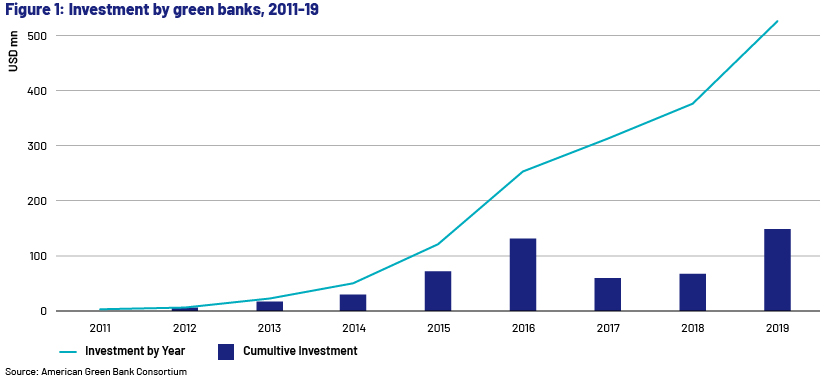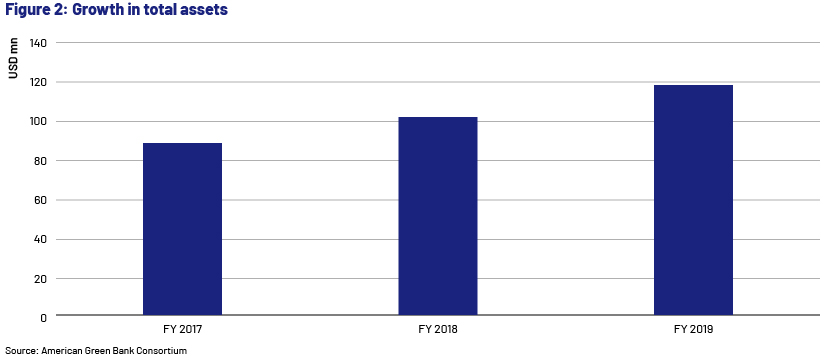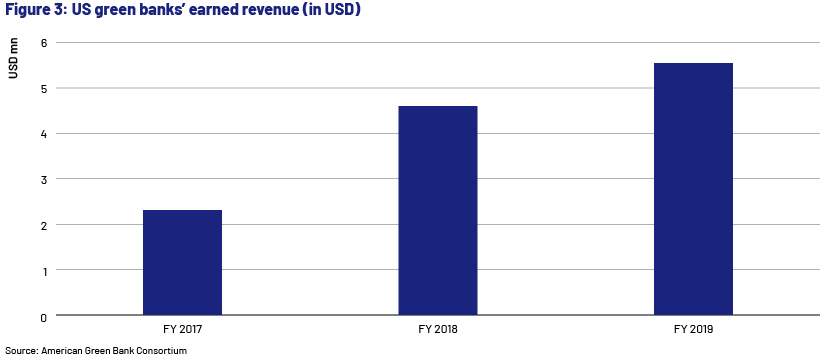Published on March 31, 2021 by Paridhi Goel
The Organisation for Economic Co-operation and Development (OECD) defines a green bank as an entity established specifically to facilitate private investment in domestic low-carbon, climate-resilient infrastructure. Green banks are specialised institutions formed to finance projects aimed at protecting and preserving the environment. The projects may include those related to clean energy generation and storage, clean transport and sustainable water infrastructure.
Role played by green banks
The confusion about green banks relates to how they are part of the banking experience, as they are not "banks" in the literal sense, in that they do not accept deposits from the public. Rather, they promote environmentally friendly forms of banking while reducing the carbon footprint of the banking experience.
Based on a more sustainable model than statutory funds, green banks enable investments at market rates, ensuring a revenue stream to cover a bank's own costs while preserving its capital base for continued deployment.
Green banks work in collaboration with the private and public sectors to channel their investments towards clean energy markets. They aim to perform the following functions:
Act a specialised financial institution helping build financial resilience to risks posed by climate change
Act as a bridge between environment-centred projects and capital
Devise innovative techniques to boost the flow of capital to those sectors/projects that would otherwise not attract much capital, such as renewable energy financing.
In addition, prove the mettle of such “underserved” and “wanting” projects by endorsing them as being “economically and financially viable”
The efficiency of green banks in the US
The whole world is impacted by climate change. Many economically crucial states in the US such as Florida, California and Nevada are severely affected by extreme climatic events. Developing environmentally conscious projects can help the US economy with more than just the following:
Reducing carbon footprint
Reducing dependence on conventional sources of energy and transitioning to sustainable methods of generating energy in time
Creating jobs, easing the increasing problem of unemployment
Tapping the public’s growing environmental consciousness; 7 of 10 voters want Congress to invest aggressively in the clean energy industry, according to the 2020 US Green Bank Annual Industry Report by the American Green Bank Consortium
There are two pioneer institutions in the US in this segment; Connecticut Green Bank and New York Green Bank established in 2011 and 2014, respectively (apart from the 15 more green banks in operation in 2021).
Green banks have made a cumulative investment of USD5.3bn since their inception in 2011, with USD1.5bn invested in the year ending 31 December 2019.

Performance of green banks in the US
The efficiency of green banks can be measured by growth in total assets and revenue in recent years.
Total asset growth
The impact of green-banking activities can be gauged from growth achieved in the previous three fiscal years. Green banks are believed to have sufficient potential to retain financial viability even without public funding.

Trends in earned revenue
Earned revenue is defined as revenue generated from an organisation's operating activities. It does not include funds generated from non-operating activities. Earned revenue for the fiscal year 2019 showed a 22% increase over 2018 and a significant 98.3% increase over 2017.
The upward trend in earned revenue is expected to continue in the coming decades, mainly due to environment-related matters transitioning from “good to have” to “must have” in the minds of administrative teams of more and more corporations, governments, financial institutions, policymakers and consumers in the US as well as around the world

Conclusion
Public as well as private entities have been traditionally assessing projects in terms of the risk and return associated with them; related environmental concerns have seldom received due consideration.
The number of entities that acknowledge and adequately adopt the UN’s Sustainable Development Goals has been increasing since the start of the decade. However, to build a planet “healthy” enough to support “healthy” economies, much more needs to be done to remediate the damage already inflicted and avoid further damage.
It is also important to understand that governments and regulatory bodies alone cannot do all that is required to restore and maintain ecological balance. Private entities and individuals need to comply with statutory initiatives to make environmentally conscious projects economically viable and overcome barriers to achieving their core objectives.
Green-banking practices are aimed not only at enriching the environment, but also at ensuring a lucrative emerging business landscape, likely to be more popular among consumers.
How Acuity Knowledge Partners can help
Green finance makes for a strong case as a growth avenue for financial institutions, and Acuity Knowledge Partners (Acuity) facilitates a wide range of customised research and analysis. Green banks have actively supported the administration of the Paycheck Protection Program (PPP) managed by the US Small Business Administration. They have helped contractors and those in need of working capital access loans under the PPP. Acuity can also assist green banks in their administration of PPP loans.
Sources:
www.oecd.org
www.fs-unep-centre.com
www.unenvironment.org
www.coalitionforgreencapital.com
www.greenbanknetwork.org
www.greenbankconsortium.org
www.irena.org
What's your view?
About the Author
Paridhi is an Analyst in the Commercial Lending division at Acuity Knowledge Partners. Her current role involves financial spreading and analysis for an US-based commercial bank.
She holds an MBA (Finance) from Guru Gobind Singh Indraprastha University, Delhi and has completed her Bachelors in Commerce from University of Delhi.
Like the way we think?
Next time we post something new, we'll send it to your inbox








